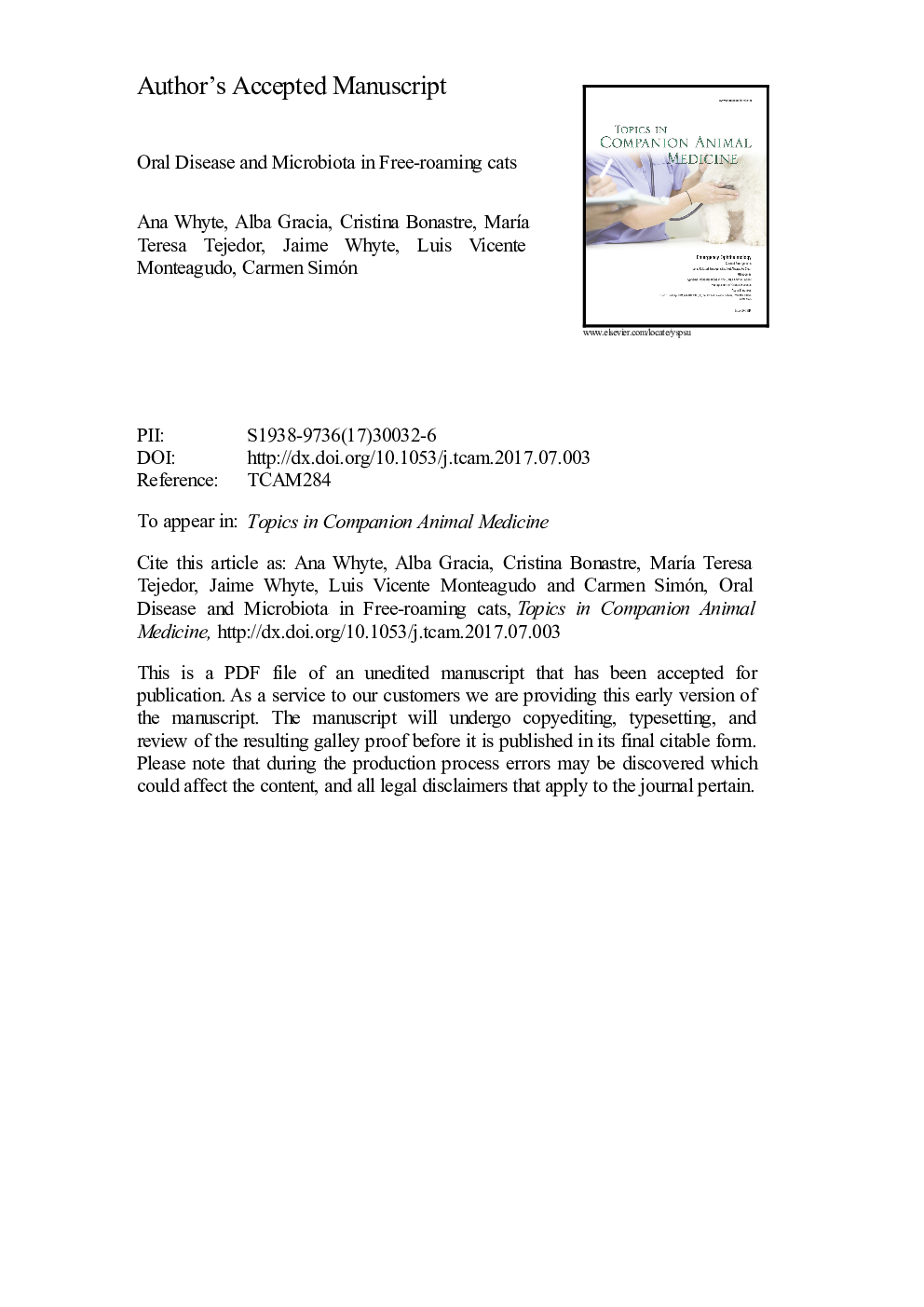| Article ID | Journal | Published Year | Pages | File Type |
|---|---|---|---|---|
| 8485031 | Topics in Companion Animal Medicine | 2017 | 17 Pages |
Abstract
Oral health status was evaluated in 34 free-roaming cats that were submitted to a Trap-Neuter-Return program. Only 38.2% of individual cats showed oral disease. Periodontal disease (PD) was present in 6 cats ( 17.6%). Four cats (11.8%) showed feline gingivostomatitis, and clinical evidence of feline odontoclastic resorptive lesions was detected in only 3 animals (8.8%) by probing, but radiological studies would be necessary for reliable detection. Signs of PD occurred in 31.6% of teeth; only the less severe stages of PD were present. No retention of deciduous teeth, malocclusion, tumors, or dental fractures were found. Calicivirus was detected in 50% of the cats. The most frequent bacteria found were α-hemolytic Streptococcus (23.5%), Staphylococcus (17.6%), Neisseria (15.7%), and Pasteurella (11.8%). A significant association between age and oral disease was found (P = .001). The mean of bacterial strains/genus was higher in healthy mouths than in diseased mouths (4.5 vs. 2.1). In diseased mouths, Staphylococcus was the most frequently isolated genus (23.1%), whereas α-hemolytic Streptococcus was most prevalent in healthy mouths (33.3%). A significant association was detected between Porphyromonas and fungal isolation, with a fear concordance coefficient (κ = .334; P = .016).
Related Topics
Life Sciences
Agricultural and Biological Sciences
Animal Science and Zoology
Authors
Ana PhD, Alba MD, Cristina PhD, MarÃa Teresa PhD, Jaime PhD, Luis Vicente PhD, Carmen PhD,
